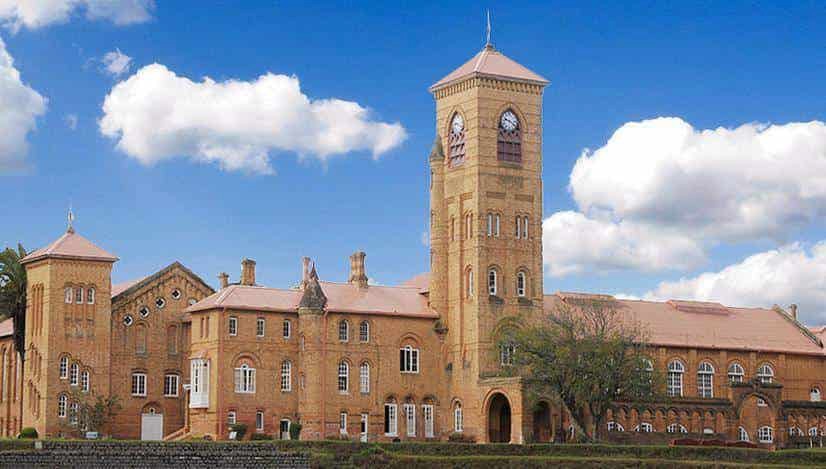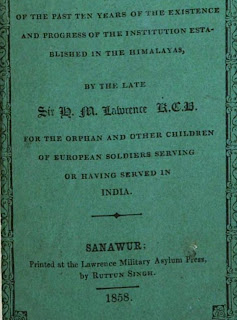SIR HENRY, LADY LAWRENCE & THE LAWRENCE ASYLUMS
Honoria Lawrence's role in shaping the character and temperament of Henry Lawrence was immense as also her contributions to his literary and philanthropic work. This of course included establishing the Lawrence Aslyums for the children, especially orphans, of British soldiers posted in India.
An interesting fact is that Lady Lawrence was probably the first white woman to step into the remote kingdom of Nepal.
Frederick Gibbon wrote, "As Major Lawrence and his wife sat in their balcony at Khatmandu, drinking in the pure bracing air and rejoicing in the beauty around them, their hearts went out to the little ones in the plains, the children of the European soldiers who were being dragged about from cantonment to cantonment , their strength and energy sapped by the sun, wasted by fever, sickening in the stifling night time; and their desire to benefit and safeguard the children now began to take definite shape " Source: "The Lawrences Of The Punjab",by Frederick Gibbon,: published by J M Dent & Co, 1908.
Henry Lawrence (1806-1857)
Honoria Lawrence ( 1808-1854)
They developed the idea and saw their dream come true with the establishment of the first Lawrence Asylum in Sanawar in 1847. Naturally, this got the most attention from Sir Henry and Lady Lawrence as it was planned and built in their lifetime.
Sir Henry and Lady Honoria were largely instrumental in framing the rules for this asylum, including determining the priority list for admission covered in the previous blog post.
Ed: While we refer to them as Sir Henry and Lady Honoria, for convenience, it must be clarified that he was actually knighted in 1848
His next assignment saw Sir Henry move to Lucknow as the Chief Commissioner of the Oudh province. It was here that he died in 1857. The Asylum in Ootacamund established in 1858 was the first to be set up in his memory. He had always wished that an asylum be set up in the Nilgiri Hills in South India similar to the ones set up in Sanawar and Mount Abu. This, today, is Our School- The Lawrence School, Lovedale.
The fourth Lawrence Asylum in British India was established in Ghora Gali near Murree in 1860, again in the memory of Sir Henry Lawrence. This went to Pakistan following the Partition of India in 1947. It continues till today as The Lawrence College.
Sir John William Kayne wrote about Sir Henry: " There is a monument to his memory in the great metropolitan cathedral of St Paul; but the grandest monument of all is to be found in the Asylums which bear his name."
Source: “Lives of Indian Officers: Major D’Arcy Todd; Sir Henry Lawrence; General Neill; General John Nicholson” by Sir John William Kayne; published by David Bogue, 1880
The monument referred to by Sir John is the one made by J G Lough in St Paul's Cathedral, London. It shows Sir Henry and Lady Lawrence welcoming orphan children with open arms.
This picture is from The Victorian Web: Literature, History, and Culture in the Age of Victoria. published with the kind permission and courtesy of Dr Jaqueline Banerjee.











